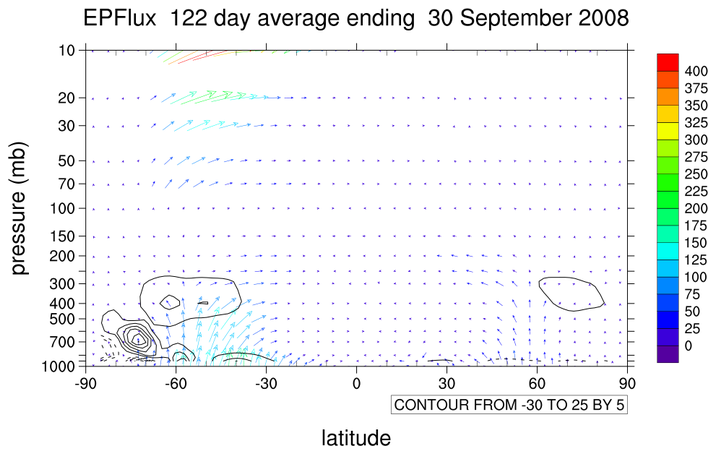A vector quantity with nonzero components in the latitude-height plane, the direction and magnitude of which determine the relative importance of eddy heat flux and momentum flux. When the Eliassen-Palm flux (EPF) vector points upward, the meridional heat flux dominates; when the EPF vector points in the meridional direction, the meridional flux of zonal momentum dominates. The divergence of the Eliassen-Palm flux is more frequently used as a diagnostic tool, as it is proportional to the eddy potential vorticity flux. In the special case when the EPF divergence is zero, as for steady, frictionless, linear waves, thermal wind balance is maintained in an idealized zonally symmetric atmosphere through the induction of a mean meridional circulation, even though the waves produce significant eddy heat and momentum fluxes.
The NCL function, epflux, is based upon code developed by J. Barsugli (NOAA/PSD) and adapted by C. Smith (NOAA/PSD). The original NCL script is at:
http://www.esrl.noaa.gov/psd/data/epflux/epflux.2010.ncl
A guide to the EP-flux computations and sample results are at:
http://www.met.reading.ac.uk/~pn904784/snap/ep_flux_calculations.html http://www.met.reading.ac.uk/~pn904784/snap/ssw20122013.html http://esrl.noaa.gov/psd/data/epflux/images/EP_Flux_Calculation_and_Display.pdf" Reference: Edmon, H.J., B.J. Hoskins, and M.E. McIntyre,1980: Eliassen-Palm cross sections for the troposphere. J. Atmos. Sci., 37:2600-2616 doi: http://dx.doi.org/10.1175/1520-0469(1980)037<2600:EPCSFT>2.0.CO;2




